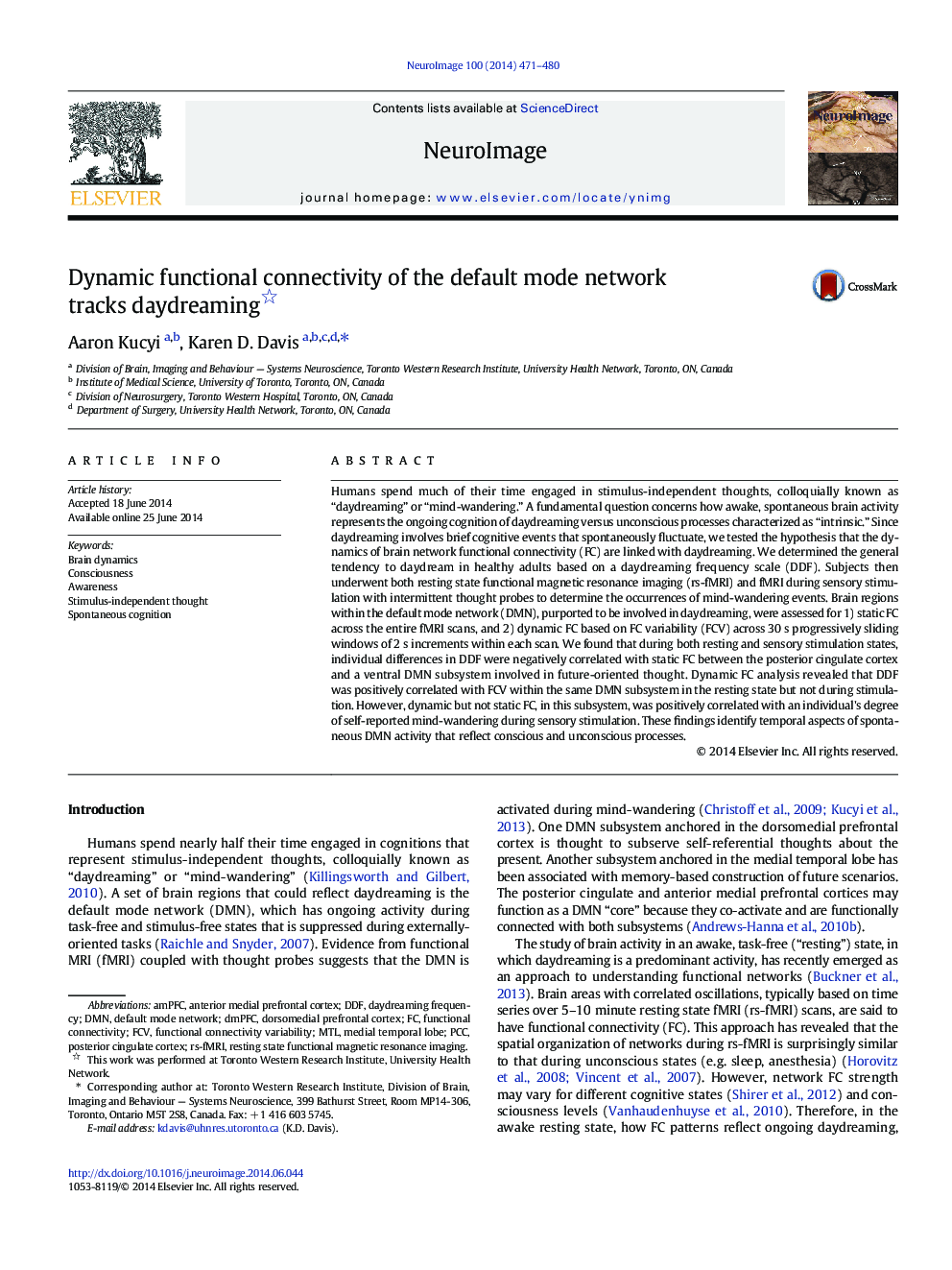| Article ID | Journal | Published Year | Pages | File Type |
|---|---|---|---|---|
| 6026782 | NeuroImage | 2014 | 10 Pages |
Abstract
Humans spend much of their time engaged in stimulus-independent thoughts, colloquially known as “daydreaming” or “mind-wandering.” A fundamental question concerns how awake, spontaneous brain activity represents the ongoing cognition of daydreaming versus unconscious processes characterized as “intrinsic.” Since daydreaming involves brief cognitive events that spontaneously fluctuate, we tested the hypothesis that the dynamics of brain network functional connectivity (FC) are linked with daydreaming. We determined the general tendency to daydream in healthy adults based on a daydreaming frequency scale (DDF). Subjects then underwent both resting state functional magnetic resonance imaging (rs-fMRI) and fMRI during sensory stimulation with intermittent thought probes to determine the occurrences of mind-wandering events. Brain regions within the default mode network (DMN), purported to be involved in daydreaming, were assessed for 1) static FC across the entire fMRI scans, and 2) dynamic FC based on FC variability (FCV) across 30Â s progressively sliding windows of 2Â s increments within each scan. We found that during both resting and sensory stimulation states, individual differences in DDF were negatively correlated with static FC between the posterior cingulate cortex and a ventral DMN subsystem involved in future-oriented thought. Dynamic FC analysis revealed that DDF was positively correlated with FCV within the same DMN subsystem in the resting state but not during stimulation. However, dynamic but not static FC, in this subsystem, was positively correlated with an individual's degree of self-reported mind-wandering during sensory stimulation. These findings identify temporal aspects of spontaneous DMN activity that reflect conscious and unconscious processes.
Keywords
Related Topics
Life Sciences
Neuroscience
Cognitive Neuroscience
Authors
Aaron Kucyi, Karen D. Davis,
